
table of contents
- Properly care for shade plants
- Blooming shade plants from A - E
- Plants from F - H
- Shade plants from K - P
- Flowering plants from R - Z
- frequently asked Questions
Blooming shade plants for the garden bring decorative color to dark areas under trees, behind the house or on the balcony thanks to their flowers. But which plants are suitable?
In a nutshell
- only a few plants can do with little light
- Even in shady places, plants should receive light sunlight for about three hours a day
- Bucket culture is possible with many plants, but requires a different maintenance effort than outdoors
- a good mix of plants ensures that flowers can always be seen
Properly care for shade plants
With all flowering plants for a location in the shade, the rule is that they must be properly cared for. This does not only apply to fertilizing, but above all to watering. Unfortunately, especially in summer, the plants that were planted in the shade - for example under trees or behind the house - are often forgotten. The following points must therefore be observed:
- Regular watering: The soil should be well moistened but not wet. When cultivating in a tub, greater care must be taken to ensure that the substrate does not dry out.
- Cover the soil: By applying bark mulch, evaporation is reduced and the soil is fertilized over the long term. Alternatively, however, coarse gravel can also be used. In any case, this measure reduces the amount of water required and the frequency of watering.
- Introduce drainage: It is particularly important when cultivating the bucket that the water can run off sufficiently and does not build up in the bucket. A layer of gravel on the bottom of the planter, coconut fibers or sand to loosen up the soil and good drainage in the case of a substrate that tends to compact can prevent waterlogging.
Blooming shade plants from A - E
Bergenia
The bergenia is an ideal perennial for shade and partial shade. You should fertilize them every two weeks from April to August. The use of liquid fertilizer is recommended for this. The addition of compost or the use of long-term fertilizers are also suitable.
The pink to red flowers appear between April and May and last until June. However, the lush green and thick leaves of the bergenia are a decorative ornament even after flowering. In addition, with some varieties, a second flowering phase can be achieved in autumn if the dried-up inflorescences are cut off early in early summer.
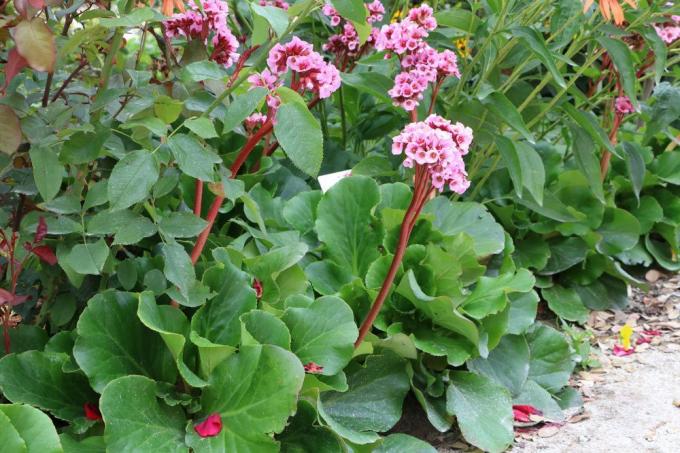
Lead root
The lead root is a delicate and in itself inconspicuous but blooming shade plant - until it begins to bloom in May. Dense blue flowers can cover old tree trunks or trellises in climbing varieties such as Cape Leadwort. The following factors should be taken into account when caring for lead root in general:
- needs large amounts of nutrients, so fertilize regularly
- Flowering time from May to September
- ideal for culture in the bucket
- provide climbing aids or climbing aids in the case of cape leadwort
- mostly not frost-resistant therefore wintering indoors
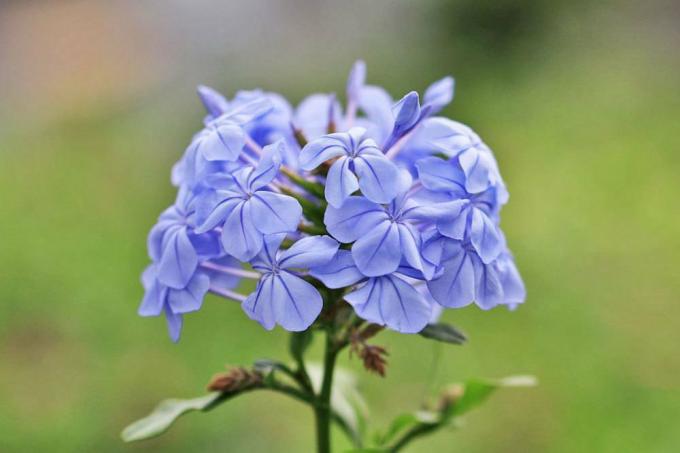
Christmas rose
The Christmas roses are unusual because they also bloom in snow and shrink again when the temperature is too low before they open their flowers again.
- good combination with witch hazel, winterling and snow heather
- partially shaded to shady location
- bloom in winter
- Frost hardy to -10 ° C
- also suitable for bucket culture
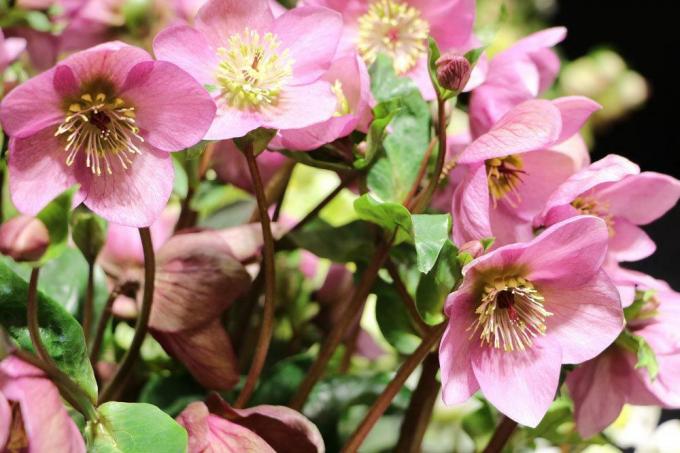
Tip: Since Christmas roses bloom in white, they don't add a lot of color to the garden. If you like it more colorful and colorful, you can choose the closely related but much more unknown spring roses.
Monkshood
With over 300 species, the monkshood has a large selection so that the right one can be found for every garden and every location in the shade. The characteristics include:
- Heights of ten centimeters up to three meters
- straight upright and twining varieties
- Flowering mostly from around June, but depending on the variety
- need nutrient-rich, slightly moist soil
- blue to purple flowers

But beware! The monkshood is highly poisonous in all parts. Even skin contact is sufficient for reactions. In gardens with small children or playing pets, you should therefore do without the plant.
Plants from F - H
thimble
Just like the monkshood, the thimble is poisonous in all parts. It grows upright and has a particularly interesting inflorescence. In addition, the following points apply to him:
- available in different colors from white to purple
- needs fresh, loamy, humus rich soil
- usually reaches a height of more than one meter
- biennial
- hardy
- the perennial is suitable for outdoor and container culture
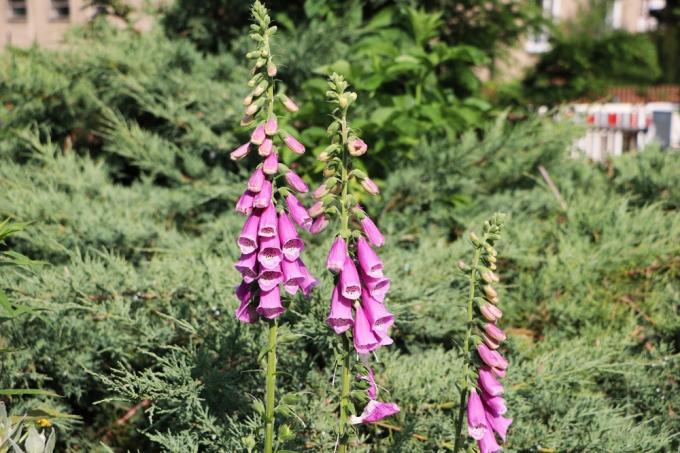
Funkie
Those from Asia Hostas are available in numerous varieties and with many flower colors. Even the foliage shines in decorative colors in autumn. They also have these advantages:
- Outdoor varieties are hardy, even without protection
- suitable as cut flowers
- Dry phases are survived well
- great biodiversity and numerous varieties
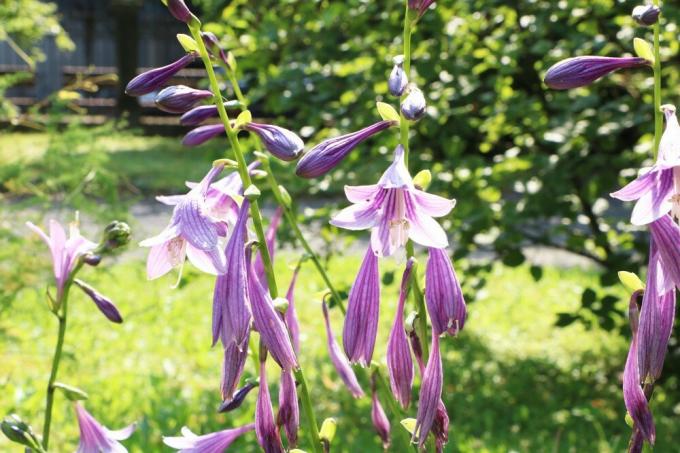
Commemorate
The Gedenkemein is a flowering plant for partial shade and light shade, it should not be too dark. Nevertheless, it is a wonderful underplantation for trees and bushes, as long as it still receives sufficient daylight. It also has these properties and requirements:
- blue bloom
- Flowering time from April to May
- pointed leaves
- low height of ten to 20 centimeters
- forms floor-covering carpets through runners
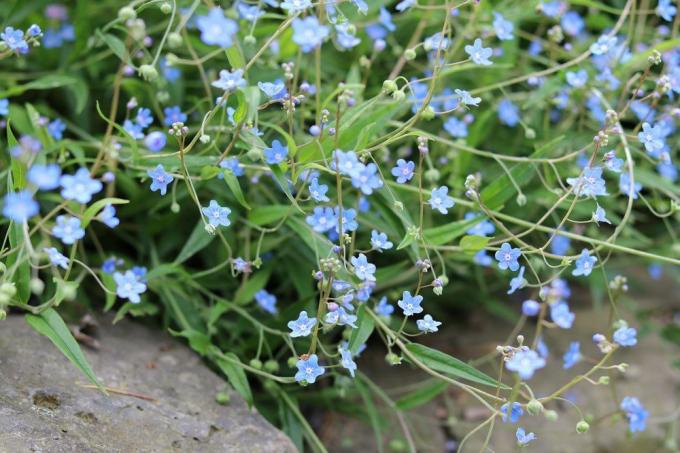
Grove flower
The grove flower is a flower-rich ground cover that can transform sunny and partially shaded areas into a sea of flowers. This not only allows them to bring splashes of color into the garden bed or on the balcony, but are also a real eye-catcher. Also worth knowing about the grove flower are the following points:
- long flowering period from May to September
- profuse blooms in the color blue
- annual
- Ground cover
- well suited for tub culture and outdoors
- need nutrient-rich and loose, well-drained soil
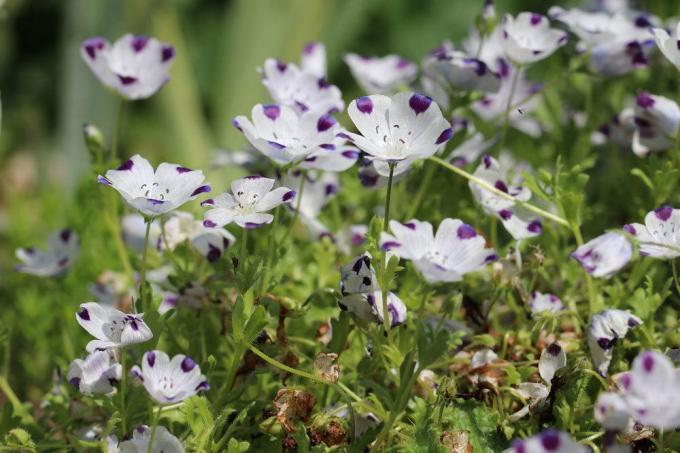
Fall anemone
The autumn anemone is an easy-care and robust plant that comes in different varieties is available and - depending on the variety - its flowers in July or September Show poses. The autumn anemone can provide accents and color in the garden until October.
- Flower color white, rose, pink or carmine red
- available simply and filled
- 60 to 160 centimeters high
- ideal for light shade or partial shade
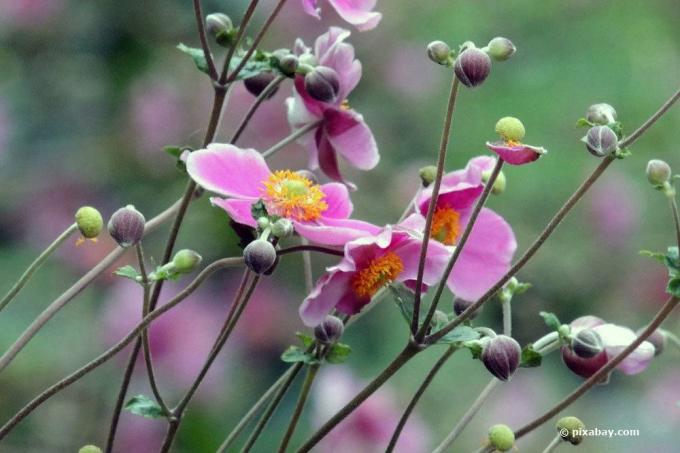
Shade plants from K - P
Toad lily
Toad lilies are eye-catching and can shine in several colors. They are frugal as long as they receive sufficient shade. These properties are characteristic of them:
- Inflorescences in the color white, yellow, pink or blue
- partly patterned flowers that are extremely decorative
- need cool, shady locations
- perennial and robust
- do best under trees or on a north wall

Spring rose
The spring rose, which is closely related to the Christmas rose, shares almost all the properties of this plant, but has a greater variety of colors. In addition, they have the following characteristics, among others:
- up to 50 centimeters high
- hardy and evergreen
- toxic in all parts
- prefer loamy but well drained and humus-rich soils

Larkspur
Larksporn is an exceptionally versatile plant due to the different cultivated forms and varieties. Ten centimeters or two meters high, ground covering or climbing - there are so many differences in this plant that shady locations of all kinds can be decorated with it without any problems.
The flower color also varies greatly and the various requirements show significant differences. Therefore, you should be careful when choosing the right lark porn. However, it is a frugal and easy-care plant, some of which can also be grown in a tub and is robust.
Magnificent spar - astilbe
The Prachtspiere or Astilbe offers a large selection with 30 to around 35 varieties and flowers very profusely even in the shade. In addition, they not only set an accent in the garden with their bright color of the flowers, but are also an eye-catcher due to the shape of the inflorescence.
- flowers reminiscent of feathers
- Flowers can shine in white, cream, pink, carmine red
- Partial shade and shade are ideal
- Height between ten and 100 centimeters, depending on the variety
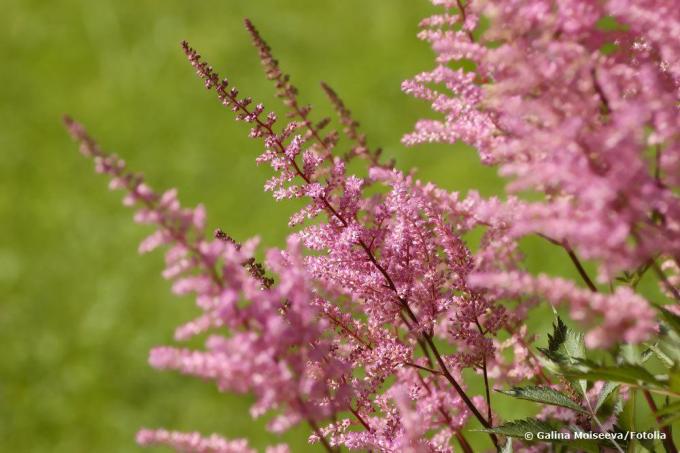
Flowering plants from R - Z
rhododendron
The rhododendron has numerous types and colors to offer, so that the optimal variety can be found for every garden and location. In general, however, the plants prefer shady to partially shaded locations and loose, permeable soil.
When choosing the location, you should make sure that the long-lived plants can reach considerable heights over time and should be protected from cold wind as much as possible. The proximity to larger trees or bushes is therefore just as possible as planting near a house wall. As a plant for the shade, the rhododendron also feels at home on the north face.
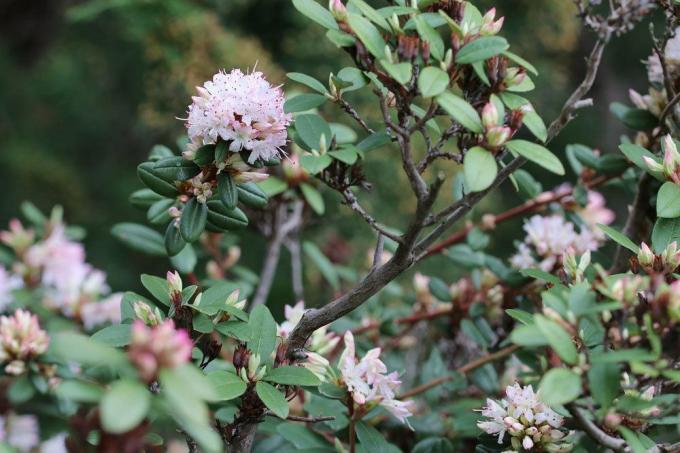
Ruprecht's herb
Ruprecht's herb is one of the resilient, flowering shade plants, with very small but persistent inflorescences. From late spring to autumn, they conjure up splashes of color on the locations in the shade. Their properties include:
- can be used as a medicinal herb
- reaches heights between ten and 40 centimeters
- resistant and easy to care for
- thrives near deciduous trees and shrubs
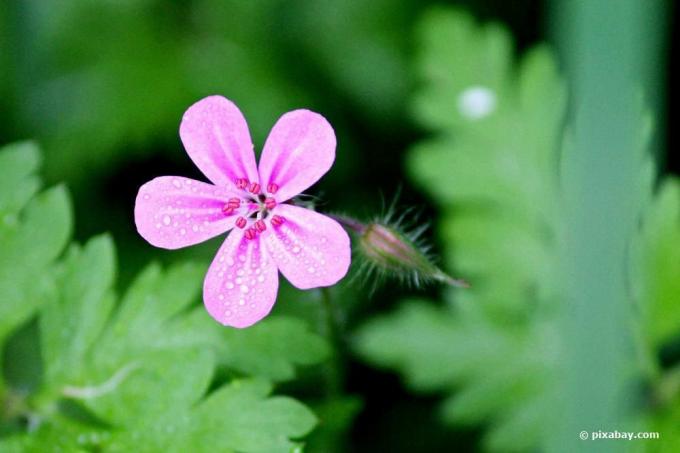
Foam flower - Tiarella
The foam blossom, also known as Tiarella, is ideal for partially shaded and shady locations and a wonderful ground cover. Therefore, the plants can be used optimally as underplanting of higher plants. They also have some handy properties when properly cared for. It refers to:
- Flowering from April to May
- Bee pasture and food source for butterflies
- well-drained, slightly moist and moderately nutrient-rich soil
- Fertilization in spring and autumn is enough
- Color of the flower from white to pink
- well hardy, therefore suitable for outdoors
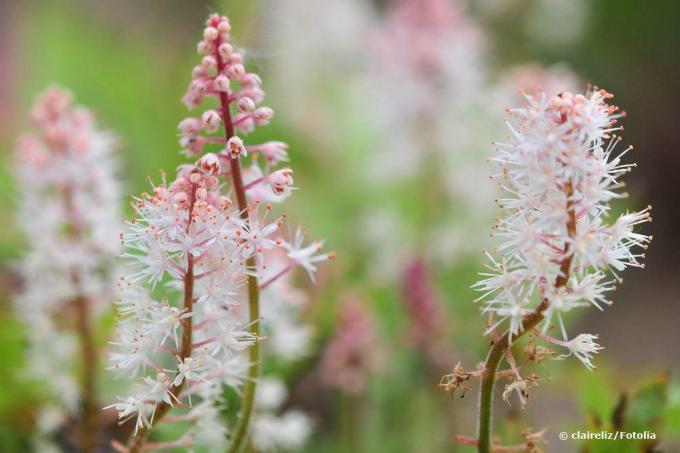
frequently asked Questions
Yes. Since the plants have less substrate available, they have to be watered and fertilized more frequently. Repotting also increases the effort. In return, plants that are not or only partially hardy can be overwintered more easily.
When it comes to shade plants, flowering power does not suffer. However, care should be taken to determine whether the plants are suitable for light shade, partial shade or full shade.
That is solely dependent on the respective type and variety of the respective plant. Normally, spring and / or autumn are ideal for outdoor use. Which time is better should be decided based on the type of plant and the regional climate.
